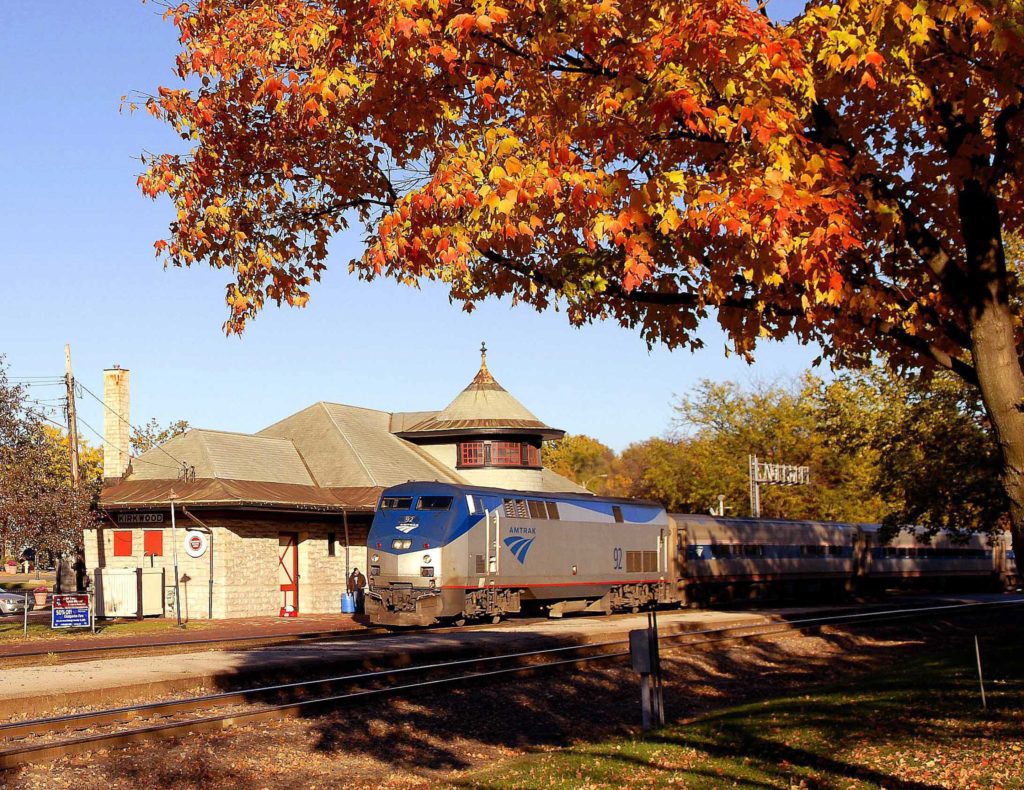With transportation taking a surreally futuristic turn—commercial flights to the moon, driver-less cars—the thought of rail travel offers a certain comfort once one wraps their head around the fact that for a long time in this country trains were the high-speed option. As they were instrumental to national progress, helping move the country from an agrarian society to an industrial one, full steam ahead.

If trains are essential to the American story, then train stations are our most tangible connection to it. “The permanent building of a depot meant that a community had arrived,” explains Patrick Kidd of Amtrak.
“It is a link in a larger network that connects people and places” and thus merits preservation.
So in 2006, Amtrak rolled out its Great American Stations program to help educate communities on the benefits of redeveloping and rehabilitating train stations across the country.
Conceived as a clearinghouse for related information, the initiative helps communities contact Amtrak before investing significant time and money in a major station project. Amtrak offers significant support, but “gives credit where it’s due, and that’s with the communities,” says Kidd. “They are the ones driving these projects from start to finish, with Amtrak and other stakeholders providing guidance and feedback.”
Such collaboration is key to restoration projects from coast to coast, including new construction on the East Coast and in the heartland, along with restorations of historic structures, including a 1907 Prairie-style depot in Iowa; a century-old neoclassical depot in Oregon, and in Ohio, Cincinnati Union Terminal, one of the greatest Art Deco buildings in the nation, flush with the era’s architecture and interior finishes.
In Oklahoma City, another an Art Deco gem, the Santa Fe depot, underwent an extensive rehab to restore its limestone and granite exterior, terrazzo flooring, ornamental metalwork, and windows. This past summer, Union Station in Raleigh, North Carolina opened with five times the passenger space of the depot it replaced, its structure marrying the steel skeleton of a 1940s-era warehouse with contemporary design, including soaring facades of glass and sustainable green roofs. Among the communities deciding that depots were important gateways and part of their civic identities are many in California, with both historic and contemporary rail stations throughout.
Locally this includes the Mission Revival depot in San Bernardino, the recipient of a major overhaul executed to maintain the building’s historic integrity, and Los Angeles Union Station, which is in the preliminary planning stages for a substantial revitalization project with preparation for future high-speed rail service.

Much like Los Angeles Union Station when it was built, train depots were usually one of the most prominent buildings in town—in their architecture and placement within the town’s urban fabric. They were beautiful embellishments to their environments that invited people of differing backgrounds to interact freely.
“One didn’t need a ticket to watch the trains from the platform, sit in the waiting room or have a cup of coffee at the depot restaurant,” says Kidd. They were, he insists, completely democratic, “the front doors of a community.” This too seems especially important to preserve. All aboard! greatamericanstations.com
PHOTOGRAPHS: COURTESY OF AMTRAK AND STEVE OSTROWSKI (CENTER)




